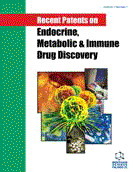Abstract
To better understand the pathogenesis of Type 1 diabetes, we have developed a new classification of Type 1 diabetes based on islet autoantibodies, mode of disease onset and insulin deficiency. The first marker is mode of disease onset and insulin deficiency, i.e. fulminant-onset (F), acute-onset (A), slow-onset and insulin-deficient (S), and slow-onset and non-insulin-deficient (N). The second marker is islet autoantibodies- a) positive (autoimmune) or b) negative (idiopathic). The combination of the four uppercase (F, A, S, and N) and two lowercase (a and b) letters indicates the clinical type of diabetes. Therefore, Type 1 diabetes is the sum of Fa, Fb, Aa, Ab, Sa and Na types of diabetes, while Type 2 diabetes is the sum of Sb and Nb types of diabetes. For example, fulminant Type 1 diabetes is the sum of Fa and Fb types of diabetes. Classic Type 1 diabetes is the sum of Fa and Aa types of diabetes. Latent autoimmune diabetes in adults (LADA) is the sum of Sa and Na types of diabetes, in which disease onset was in adulthood. An appropriate classification would improve our understanding of the pathogenesis of Type 1 diabetes and allow for easier discrimination of Type 1 diabetes from Type 2 diabetes. This review article also discusses some recent patent related to the field.
Keywords: Autoimmunity, human leukocyte antigen (HLA), insulin deficiency, insulin-dependent diabetes mellitus (IDDM), latent autoimmune diabetes in adults (LADA), mode of onset, Type 1 diabetes
 20
20





















